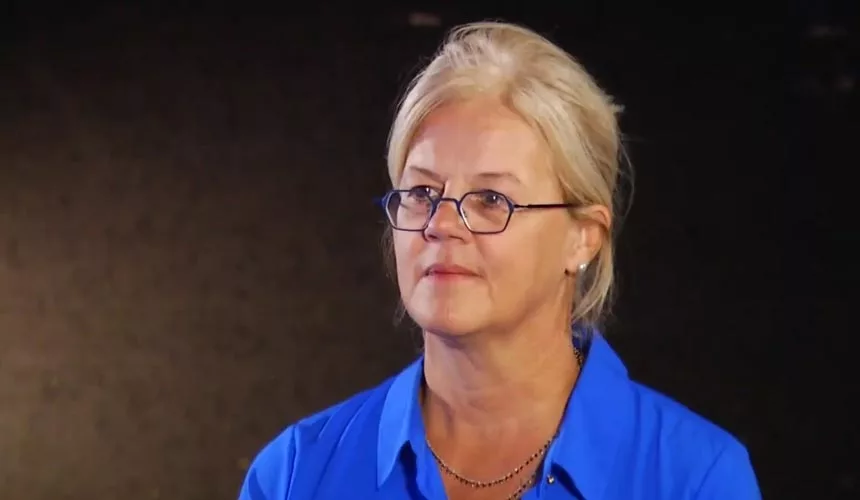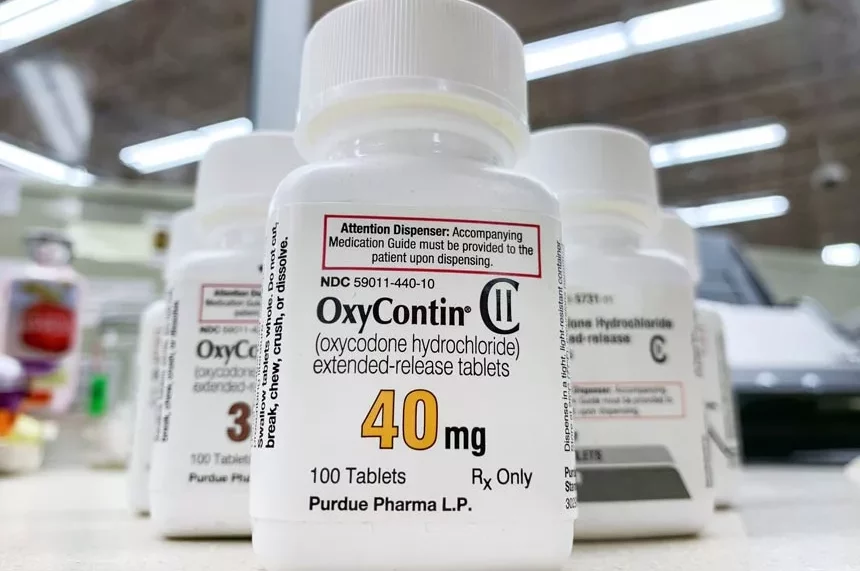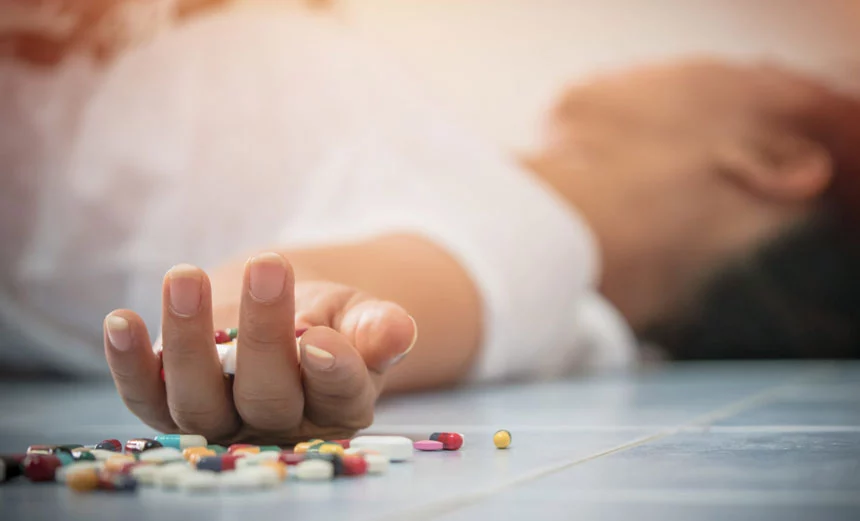The Reality Behind the Hulu Series
Table of Contents
- The Reality Behind the Hulu Series
- Dopesick By Beth Macy
- Plunging Headfirst Into The Opioid Epidemic
- The Opioid Drug: Oxycontin
- Purdue Pharma and Its Aggressive Opioid Marketing
- Bringing Light To The Opioid Crisis
- Dopesick and Media Depictions of Addiction
- How Does Oxycontin Addiction Happen?
- Effective Forms of Opioid Addiction Treatment
- Find Addiction Treatment Options for Opioids Here!
With the shock and intensity of the story seen in Hulu’s show Dopesick, you may be wondering, “is Dopesick a true story?” While the characters seen in the show are all fictional, the sad truth of the matter is that the show Dopesick is based on a non-fiction book, Dopesick: Dealers, Doctors, and the Drug Company That Addicted America, with real facts and experiences that are dramatized only somewhat for streaming on Hulu.
Keep reading to find out more about the reality behind the show, as well as what to do if you find yourself deep into opioids and need help!
Dopesick By Beth Macy
Beth Macy, the author of Dopesick: Dealers, Doctors, and the Drug Company That Addicted America, worked as a blog writer for the Roanoke Times in Virginia. As she investigated and reported about the opioid epidemic, she quickly found herself on the front lines, witnessing the tragedies and devastating effects that it caused.
She eventually left the newspaper and began working on writing a book, Dopesick: Dealers, Doctors, and the Drug Company That Addicted America, that shows the relentlessness of the opioid epidemic.

In this book, she explores some of the major factors which led to the opioid problem that we are still struggling with today. She also shows the raw and real experiences of people who have suffered from this issue.
For the Hulu show, Beth Macy worked closely on executive producer Danny Strong’s opioid addiction project to properly convey these horrific events that the opioid epidemic has caused upon many individuals in America.
Plunging Headfirst Into The Opioid Epidemic
Many, many lives have been lost due to this opioid epidemic. In 1999, drug overdose deaths were recorded at a little under 20,000 people. This number has exponentially grown to just below 92,000 in 2020 and is still growing at a dangerous rate.
One of the major factors that started this epidemic is Purdue Pharma. This corporation pushed heavily for the production and sale of Oxycontin, which was highly addictive.
According to the National Institute on Drug Abuse (NIDA), during the introduction of Oxycontin, there was also a change in pain assessment and treatment which placed pain as something needing treatment despite being self-reported and determined by the patient.
This new introduction to the way pain was assessed and treated as well as the introduction to Oxycontin led to doctors prescribing this drug to individuals to help moderate their pain.
The Opioid Drug: Oxycontin

Oxycontin is the brand name for the potent opioid drug Oxycodone which is used to treat severe pain in people suffering from intense chronic pain. Although this benefit is for helping individuals with pain, it is a highly addictive drug with a high potential for abuse and addiction.
Despite how addictive this opioid is, Purdue Pharma presented this drug as a less addictive drug due to its slow release and longer-lasting effects. The owners of Purdue Pharma, the Sackler family, attained a lot of their wealth from this singular product.
Many black urban communities struggling with this opioid use will face more difficulties in trying to find help for these issues. Black and brown communities are often denied treatment and health care as opposed to predominantly white communities.
Purdue Pharma and Its Aggressive Opioid Marketing
Purdue Pharma’s incessant promotion and marketing of the drug Oxycontin is what led to it being such a major issue. They held more than 40 national pain management and speaker-training conferences and paid all expenses for physicians, pharmacists, and nurses to come to the conferences.
Sales representatives for Purdue Pharma were provided rewards for increasing sales of Oxycontin. This made it so the supply of Oxycontin to doctors was always maintained and steady.

The Failure of Addiction Prevention Measures
This stable flow of Oxycontin allows doctors to prescribe the drug more often, especially while misunderstanding that Oxycontin is not an addictive drug. One person’s life could be completely uprooted because of this misrepresentation and, unfortunately, this was the case for many people.
Companies associated with the company Purdue Pharma faced mostly a criminal justice lawsuit and were criminally charged with misbranding Oxycontin. In 2007, the company admitted to false branding of Oxycontin and had to pay $600 million in fines.
The truth of the matter is that Oxycontin is just as addictive as other opioids prescribed for pain. Despite it being framed as an opioid with little risk for addiction, this false representation has resulted in many tragedies and lost lives.
Bringing Light To The Opioid Crisis
Considering there are many people wondering whether Dopesick is a true story or not, there is a lack of understanding surrounding the opioid epidemic we are and have been experiencing.
This lack of attention to the opioid epidemic allows it to continue to grow worse and worse, harming our communities. Understanding opioid addiction and opioid addiction treatment can help with fighting against this opioid addiction crisis.
For individuals, understanding and being aware of these drugs can help with preventing further detrimental effects. Educating the dangers and issues that come with the use of these substances can help reduce the dangers and risks that come with use.
Dopesick and Media Depictions of Addiction
Despite the power of the story brought to light by Beth Macy, based on a true series of events, addiction can and does happen anywhere. All around us, the aftereffects of the marketing of opioids by Purdue, Richard Sackler, and other ‘bad actors,’ in the pharmaceutical space are still playing out.
With consequences that stretch far beyond a small Virginia mining town, it is shocking how little actual consequence there have been for Richard Sackler and the Sackler family as a whole.
Using Michael Keaton in a lead role certainly has drawn attention to the origins of the current opioid epidemic, but Dopesick focuses more on the human toll of America’s struggle with a drug that should never have been so widely prescribed in the first place.
There is little sense of more punitive attitudes among the public, nor of executives pleading guilty to charges and facing consequences for the massive deaths caused by their products.
Can More Truthful Stories Help Dispel the Stigma of Addiction?
While it will take more than an eight-episode series to remove the stigma from people addicted to opioids and other drugs, the show Dopesick is a step in the right direction. It may not portray Appalachia accurately enough for some viewers, and it avoids the higher truth of government complicity in letting Purdue get away with negligent behavior for too long.
Yet Michael Keaton’s character and the extensive research done by the show and Dopesick creator Danny Strong help give a new light on the struggles those with addiction face. Coming up we will look further at how the events depicted can help us understand opioid use disorders and their effective treatment.
How Does Oxycontin Addiction Happen?

Addiction can happen to anyone, especially with a drug as addictive as Oxycontin. Due to the misunderstanding of how harmful Oxycontin is in extended use, there were many individuals who suffered immensely from the issues with these drugs.
The long-term use of opioid painkillers often led to an increased risk of prescription drug abuse and addiction. With the use of opioid drugs, it is important to be aware of the risks of opioid addiction.
Individuals struggling with mental health disorders are more likely to struggle with addiction. Mental health disorders are a form of psychiatric disorder in which thoughts, feelings, mood, and perception are altered.
This can make it very difficult for these individuals to properly function and typically causes them to have a lowered quality of daily life. This lowered experience is what makes substance use for these individuals so dangerous.
How is a Substance Use Disorder Defined?
A substance use disorder (SUD) is a form of mental disorder in which an individual is unable to properly inhibit their substance use. Addiction is referred to as the most severe case of SUDs. There can be many different types of SUDs, one being an opioid abuse disorder.
Someone with an opioid abuse disorder is unable to control their use of opioids. Someone struggling with a SUD usually requires drug abuse or addiction treatment to recover and maintain recovery from this issue.
Effective Forms of Opioid Addiction Treatment
Opioid addiction is immensely difficult for someone to manage without receiving proper treatment. Opioids develop a physical dependence within individuals struggling with opioid abuse.
Thankfully there are treatment programs to help individuals recover from opioid addiction. Individuals struggling with severe opioid dependence will benefit from medically-assisted treatments (MATs).
These medications are able to support an individual through withdrawals as well as allow their bodies and brain to slowly return to their normal functions. They also allow an individual to be more engaged in other forms of treatment. Withdrawals can be intense and very distracting and so, diminishing their intensity allows them to remain engaged.
Medically Supervised Detox
A medical detox is a form of drug detoxification program in which an individual stays on-site to receive treatment. This allows an individual to safely and comfortably experience withdrawal and drug detoxification.
Withdrawal symptoms while stopping drug use are very intense and can be life-threatening in some cases. Without taking the proper care, an individual is likely to face many adverse effects such as relapse or overdose.
Inpatient Treatment
Inpatient treatment is a form of treatment in which an individual lives on-site at a treatment center to receive treatment. An individual is able to be removed from their current environment and into a stable and safe environment.
This intensive treatment allows individuals to rebuild and regain many of the skills lost during addiction. It is important for those with any form of opioid use disorder to devote the necessary amount of time to properly recover.
Outpatient Treatment

Outpatient treatment is a form of treatment in which an individual receives treatment during the day and can leave after receiving treatment. For opioid addiction, this form of treatment typically is often utilized as a post-recovery treatment after receiving inpatient treatment.
Outpatient treatment works well to reinforce and maintain recovery within individuals, especially those that have recovered from severe opioid addiction.
Find Addiction Treatment Options for Opioids Here!
It can be difficult to find the right treatment you or your loved one need, especially while struggling with dependence and withdrawal symptoms. Here at Find Addiction Rehabs, we can help make finding the treatment easy.
Whether finding a treatment center in your location or connecting you with recovery tools and resources, our hotline is available 24/7 to make sure you can get the help you need, anytime you need it.
Call us today and we can help get you the proper treatment you need!
Eric R. hails from Maine and does extensive work in the field of behavioral health as both a professional writer and passionate advocate for those suffering. From his own personal encounters with mental illness, he speaks to those seeking healthy relief from depression and anxiety and embraces wellness both personally and professionally. After losing friends and family to the darkness of suicide, Eric aims to educate and inform about the nature of treatment and render it accessible for all those seeking a way out of darkness and despair.

